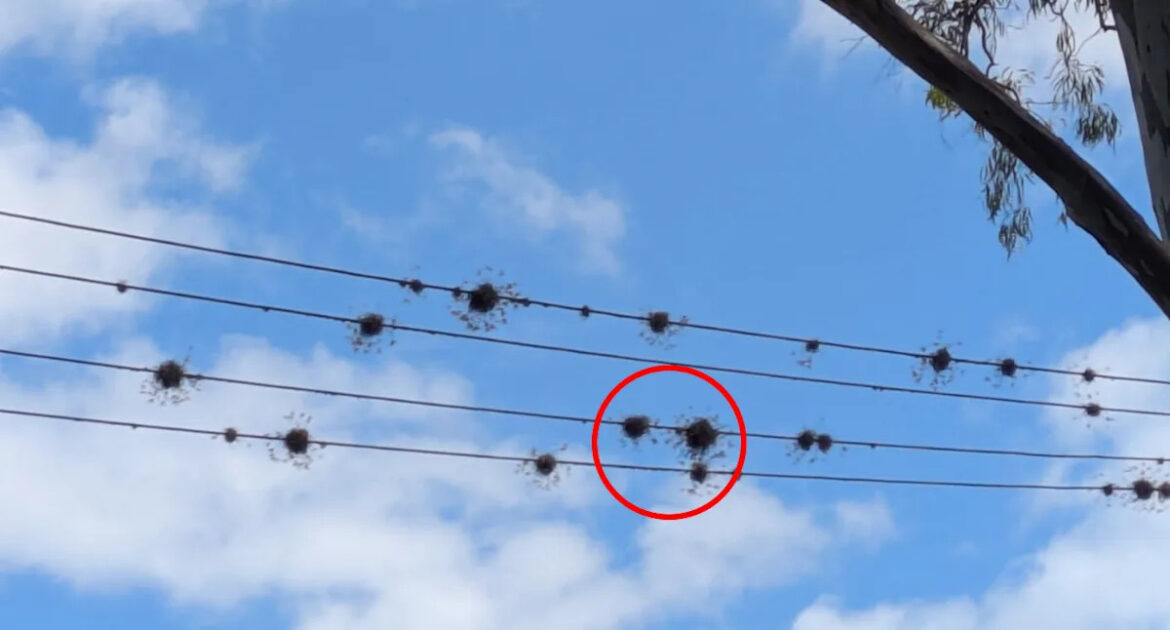After spending over a decade helping Aussies transform their gardens and backyards, Kate Wall thought she’d seen it all. Hence her surprise when she came across several unusual tufts growing on a cluster of suburban powerlines earlier this month.
The ecologist and gardening coach was driving to a new client’s home in Brisbane when she glanced up and spotted the series of fluffy balls — the largest about 15cm in diameter — tightly wrapped along wires hanging near a gum tree. Puzzled by the amazing sight, Kate pulled over to take a closer look.
“That little patch of the powerlines there beside the tree had quite an abundance, but they were nowhere else,” she told Yahoo News Australia, noting she didn’t see the plant growing on the neighbouring gum “at all”.
Kate said she “immediately” identified the growths as ball moss — a type of air plant that is frequently touted as a perfect indoor addition.
While the plants can thrive outdoors in Queensland’s humid climate, Kate said she had never come across such a scene. In its native Central America, the species “commonly colonises powerlines”, she explained.

Ball moss is a ‘remarkably hardy and fascinating’ type of air plant. Source: Kate Wall/Facebook
How did the ball moss get there?
Ball moss (Tillandsia recurvata) “is remarkably hardy and fascinating”, the gardener said. “Pure and simple, it’s an air plant, so it attaches onto trees. It doesn’t have a root system in the soil to get water, so it’s got to be able to extract moisture from the air.”
As to how the plant started sprouting on the powerlines, Kate told Yahoo she believes its “very fluffy” airborne seeds must have landed there.
“I suspect that the reason that it’s beside the tree and nowhere else is that everywhere else the wind can move faster past the powerlines, but the tree will slow the wind and they can trap in the powerlines better there.”
Gardener’s invasive weed plea to Aussies
After posting images of the growths online, the gardener said she was stunned to receive “very emotive comments” from people claiming the plant is an invasive pest.
While the species is not listed as a weed in Australia, its close relative, Spanish moss, is increasingly being recognised as an environmental weed in Queensland and New South Wales, however it’s not currently declared so under any laws.
Spanish moss has been wreaking havoc in parts of Sydney for the past few months, with several councils urging residents to keep an eye out for the “beautiful” escaped garden plant known to suffocate larger trees.

Spanish Moss, a hanging plant that thrives in warm, humid environments, caused big problems in Sydney after heavy rain this year. Source: Kierans Creek Landcare Group/Willoughby City Council
While some harmful invasives raise the alarm for good reason, Kate told Yahoo she implores people not to jump to the worst conclusion.
“We can tend to have either a very negative approach and say this is a bad thing, it’s got to be dealt with, or we can approach it with fascination. And I would love people to take that second path.
“Have a look, learn something from the situation, and before we decide something is a bad thing, learn a little bit more about it.
“One little patch doesn’t make it an invasive species. Sure, it shows it has potential, and this is something to watch, but we don’t need to react badly initially.”
Do you have a story tip? Email: newsroomau@yahoonews.com.
You can also follow us on Facebook, Instagram, TikTok, Twitter and YouTube.



Comments are closed.